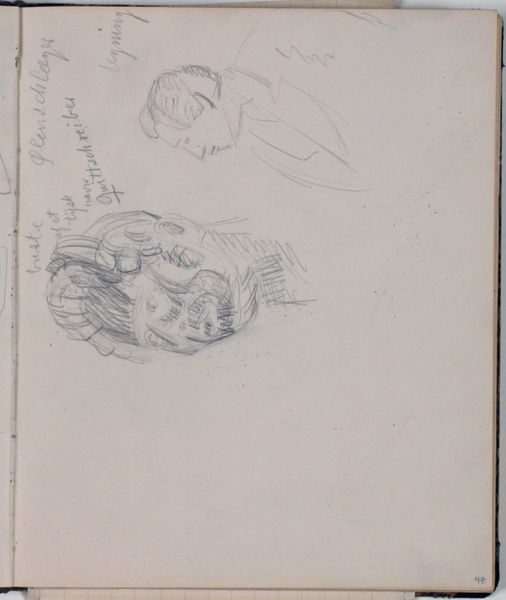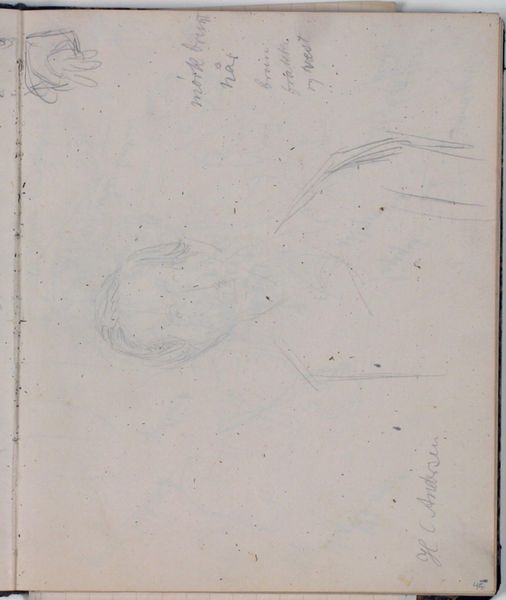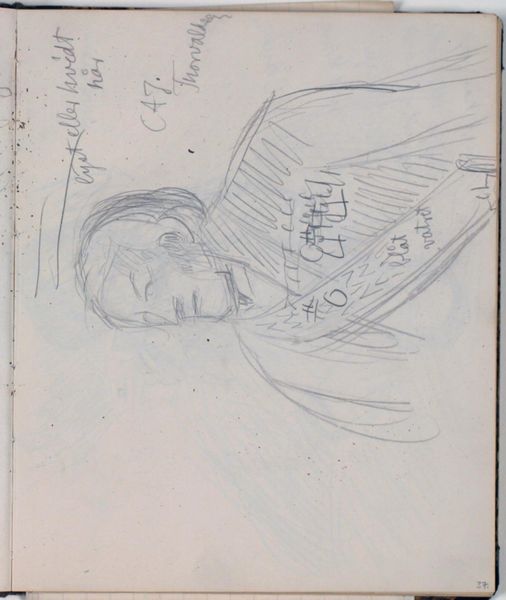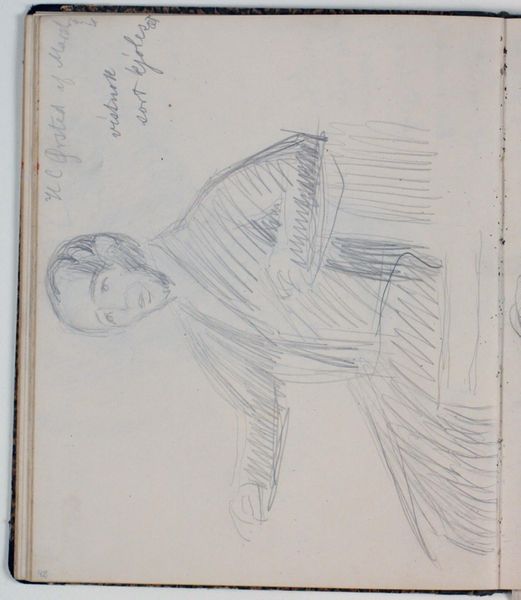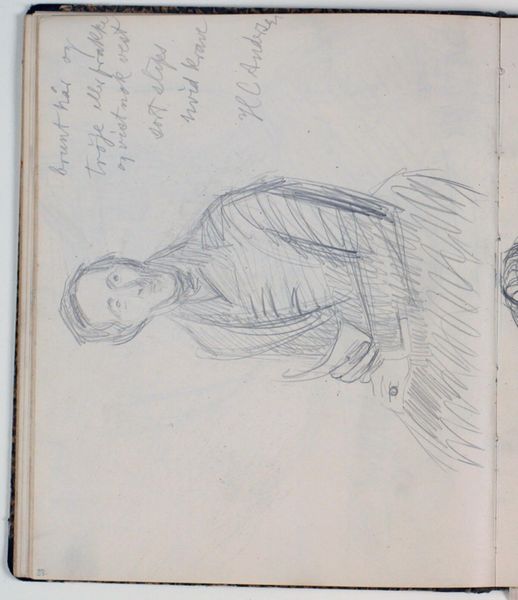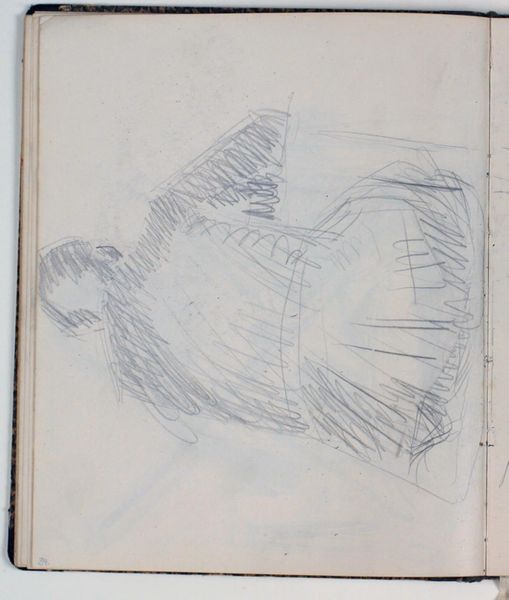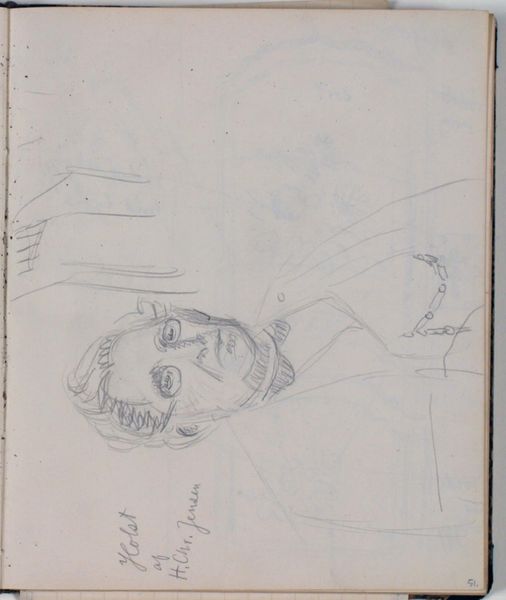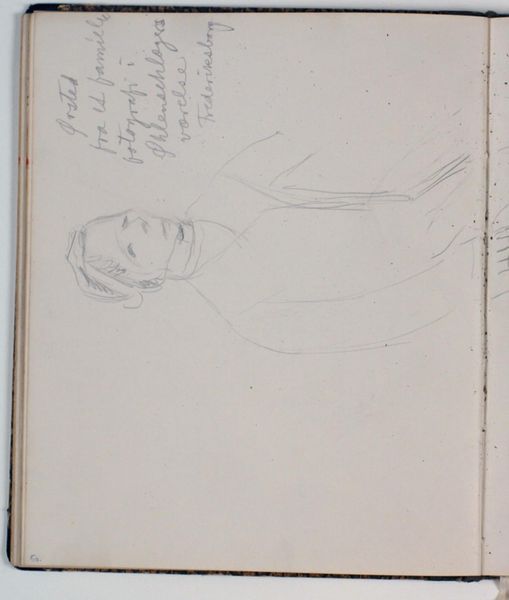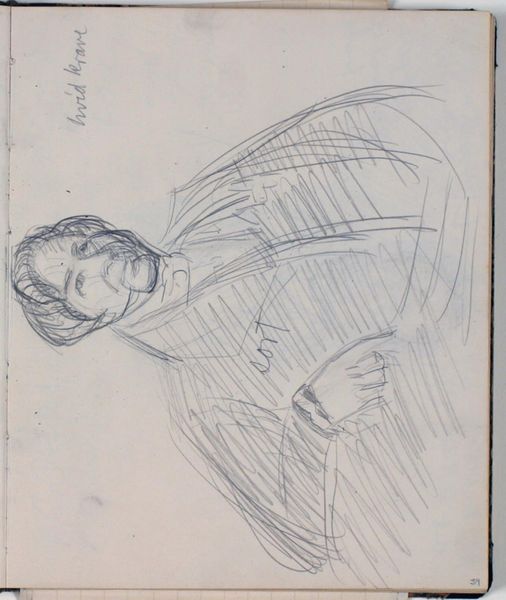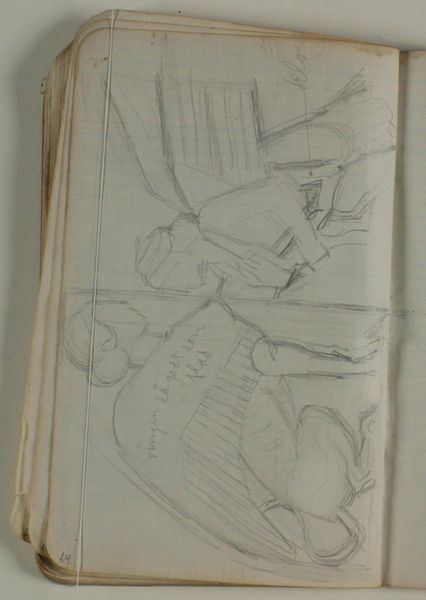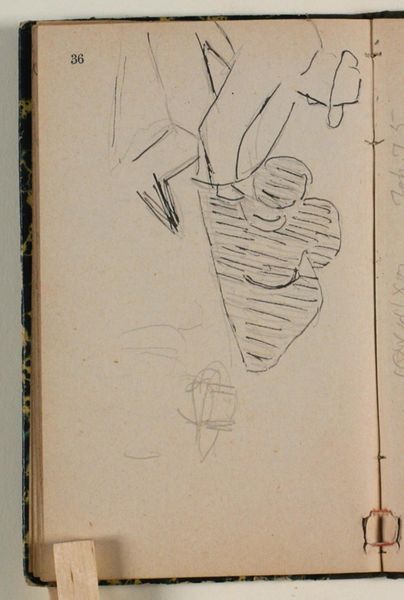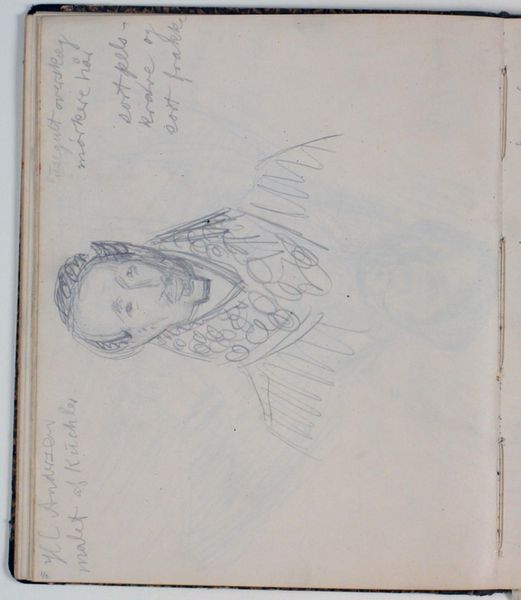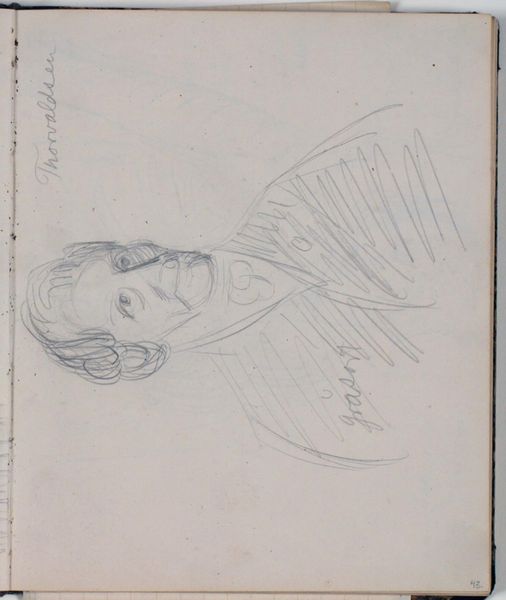
Studie af H. C. Ørsted efter et maleri. Farveangivelser 1930 - 1936
0:00
0:00
drawing, pencil
#
portrait
#
drawing
#
pencil sketch
#
figuration
#
pencil
Dimensions: 226 mm (height) x 185 mm (width) x 112 mm (depth) (monteringsmaal), 221 mm (height) x 184 mm (width) (bladmaal)
Curator: This is Niels Larsen Stevns' "Studie af H. C. Ørsted efter et maleri. Farveangivelser," a pencil drawing from between 1930 and 1936, held here at the SMK. Editor: A pencil sketch... there’s something so immediate and vulnerable about these kinds of studies. It's as if we are seeing into the artist’s mind as they wrestle with form and likeness. I almost feel intrusive observing the study, in an inspiring way! Curator: These rapid notations offer insight into the artist's process, his consideration for capturing likeness, in particular through close observation and analysis. He studied the color values of an existing painting of H. C. Ørsted, who, I should add, was an important physicist and chemist of the 19th century, famous for discovering electromagnetism. Editor: Electromagnetism... you’d think something like that would be screaming with energy, yet here he is rendered with such a gentle, contemplative air. It almost feels like a dance between scientific rigor and artistic intuition. Niels seems almost hesitant, the lines are soft as the artist seems to circle and search, in particular around the eyes. It invites speculation, what was Niels really seeing? Curator: Niels Larsen Stevns was deeply interested in rendering spiritual dimensions in his art. We have to remember, in Denmark at this time there was great interest in portraiture, not just as a means of recording appearance, but as a way to explore character, or even project cultural values. Ørsted's discovery revolutionized scientific thought and Danish identity in the 19th century. Editor: Exactly! Maybe the soft lines aren’t uncertainty but rather a seeking of the inner truth of Ørsted. Also, notice how spare the details are; it emphasizes the intensity of the face, there isn’t a flourish or unnecessary line. The hand floats in space, without details—I think this puts the focus squarely on the gaze, making the viewer really feel the gaze. Curator: Well, in the 20th century Stevns looked back to Ørsted with admiration and awe, painting him, and in this case sketching, as a man of wisdom and insight. His approach would reflect ideas about the national genius and the kind of figures that the country hoped to emulate. Editor: Seeing Stevns' intimate search certainly changes how I appreciate these sketches; rather than casual works, it makes you realize every single stroke holds some intent, reaching towards meaning. Curator: Indeed. A reminder that even the briefest sketches can tell complex stories.
Comments
No comments
Be the first to comment and join the conversation on the ultimate creative platform.
